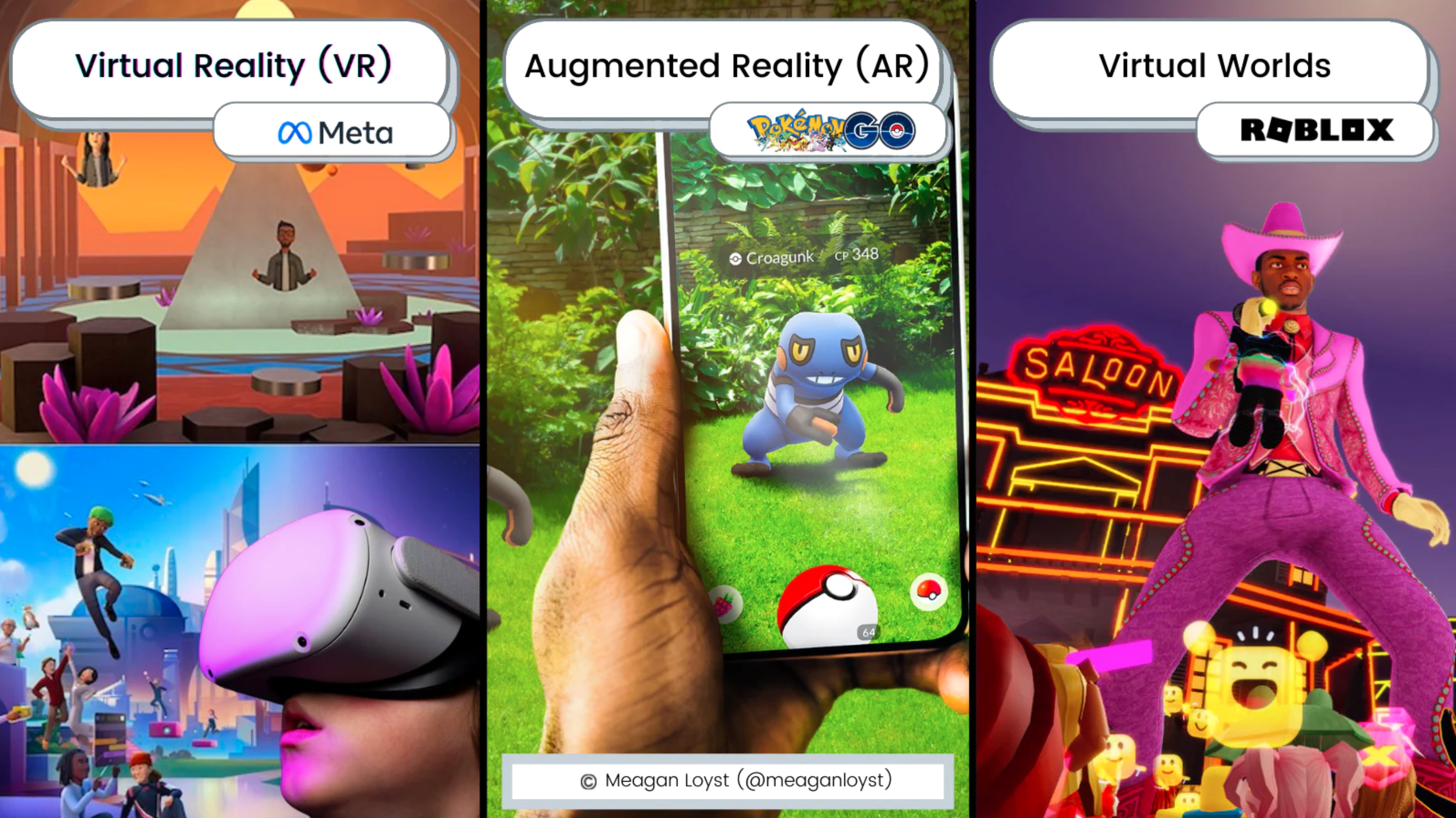Blog
Blog

Embrace the Metaverse to Reach and Engage Audiences
See how augmented reality, virtual world and virtual reality experiences can engage and delight your target audiences.
As a lifelong digital marketer who for years has professed the value of using data and insights to connect with audiences, the rise of the metaverse has been nothing short of intriguing. It seems, more and more, that our audiences co-exist in many worlds at once. With all the hype about the metaverse, I thought I’d delve deeper to help you understand — and maybe join — the trend.
Simply defined, the metaverse is a virtual world where consumers can shop, play, socialize and work. The term was coined by science fiction author Neal Stephenson; his depiction of the metaverse in the novel “Snow Crash” features people as avatars that communicate with each other and AI-generated characters. Further depictions of alternate realities, such as in the “Tron” and “Matrix” movies and the video game “Second Life,” have helped us imagine and manifest the possibilities.
Categorized as virtual reality, augmented reality and virtual worlds, the metaverse is tapping into the desire by audiences, particularly Gen Z and millennials, to engage in experiences that bring meaning and value (vs. physical goods that offer the same. For example, only 26% of Gen Z now think owning a home is important.) Let’s take a closer look at each category of the metaverse:
Source: The Metaverse: 101 by Meagan Loyst
Virtual reality.
Using technology such as Oculus, a headset that fully immerses the wearer, virtual reality creates the ability to move, see and hear in a 3D digital world. Facebook’s name change to Meta and investment of $10 billion to bring the metaverse to life via Horizon Worlds is just one example of how companies see the opportunity and growth potential.
Augmented reality.
Remember the Pokémon Go craze? Do your kids enjoy those digital filters that give them cat whiskers or pirate eye patches? These interactive experiences happen in the physical world but are enhanced by an overlay of computer-generated objects and environments. Augmented reality is tremendously popular on Snapchat and TikTok, both of which enable the creation and usage of filters.
Virtual worlds.
This is the most loosely defined aspect of the metaverse, but it essentially refers to digital worlds with digital representation. Video games like Minecraft and Fortnite are great examples of these virtual worlds; Roblox is the latest platform to take advantage, allowing users to play millions of 3D online games, customize their own avatar with skins, and spend/earn Robux (currency). With 202 million monthly active users, Roblox’s virtual world operates within itself. Creators within this environment are on pace to earn $500 million from their gaming creations this year.
What’s Driving the Craze?
While the technology to fully develop the modern-day metaverse is still under way, the data to support its appeal cannot be ignored:
- 66% of consumers “prefer to engage with brands digitally.”
- 73% find it “easier to interact with brands with a digital presence.”
- 85% believe “digital presence will be essential for a brand to be successful in the future.”
A few factors are at play. With consumers forced inside during the pandemic, a greater comfort level of interacting with people digitally was established. Consumers got better at using digital apps and tools to secure the most basic necessities like groceries and health advice. Facebook going “all-in” and rebranding their company “Meta” was another huge step for metaverse, driving up searches on the term in the U.S. by 15,000%. The rise of affordable technology has also helped spur this on; now consumers can download an app to access the latest Oculus VR. However, there is still more investment in technology (and adoption) that needs to take place before the metaverse fully takes hold.
How Can Brands Join in?
Perhaps the biggest “aha” for me is the fact that you have companies really enabling the consumer to partake however they wish – whether it’s simply enjoying the creation or creating new content themselves. This interchangeability takes the “power” away from the brand/company and puts it into the hands of the future generation, namely, Gen Z. Since this generation grew up knowing digital, the metaverse is nothing new – and it plays into their appreciation for the technology and entrepreneurial mindset. As a result, it’s expected to be a $800 billion market opportunity by 2024.
While product-oriented brands such as Vans, Gucci and Uniqlo are already utilizing the metaverse to sell their wares (a digital-only Gucci bag recently sold for $4,000 on Roblox), there is opportunity for industries such as education, workforce and healthcare to benefit as well.
To be successful, brands — whether they are CPG, retail or service-oriented — must show up culturally relevant and play to the consumer’s desire to work, shop, play and socialize while enabling an entrepreneurial spirit. But how do service-oriented brands take advantage? Here are a few ways the metaverse is already coming to life:
- Augmented reality apprenticeship programs are allowing audiences to experience a variety of professions (such as healthcare assistant, welder, builder, educator) and determine if one is right for them.
- Partnerships are forming to merge audiences. Consider a virtual world gaming platform bringing virtual hiring events to its user-base, for example.
- Virtual reality and virtual worlds are painting a picture for caregivers of what it’s like to live with glaucoma, multiple sclerosis or dementia. Assisted living facilities can use this technology to build programming that more readily meets an older adult’s needs.


